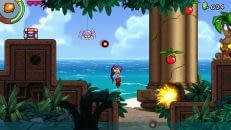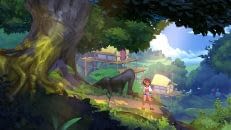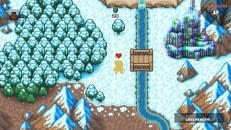Kixeye’s Advice For Indie Flash Devs
At the Flash Gaming Summit, a one-day conference on the edge of GDC, Kixeye founders David Scott and Paul Preece discussed how to succeed as an indie dev in their talk ” It’s A Long Way To The Top…If You Want To Be An Indie Flash Dev”. Fortunately, the advice given isn’t “have rich friends” or “plagiarize popular games”, as Paul and David look back on their “pitiful” revenue and give their past selves advice on game development.
1. A solid game aligns mechanics with theme, the Kixeye guys say. While we all find FarmVille a bit of a joke, part of its popularity among non-gamers, lite gamers and casual-plus gamers is that we’re all familiar with farming. We understand the relationships of seeds and plants and we already equate gardening with waiting. Now Zynga has taught an army of Facebook gamers that the suffix -ville means this type of game.
2. Plan and monitor metrics. Any indie dev watches site traffic and app store downloads, it’s hardly worth repeating here, but Scott and Preece raise other essential metrics. How many would-be players are dropping off in the tutorial? In the first stage? What percentage play but never monetize with an in-game purchase?
3. Solicit feedback, and most importantly for indies, solicit feedback from your target players. Feedback on usability is essential and it’s almost impossible to really judge this on your own project. Anyone with a homemade setup to watch cable, Hulu and NetFlix on the good screen and use the stereo speakers thinks it’s easy, but invite a friend over and watch then start fiddling with the remotes.
4. When receiving feedback on pricing and difficulty, remember though that no one will tell you to make a game harder. I’d amend this to almost no one, since there’s always a player who powers through and says it was too easy…
5. Provide a range of price points for in-game monetization, and price at least a few items higher than most players will pay. Seeing the shining Sword of Plus-One Million sitting in the cash shop next to mundane healing kits is often aspirational for the average players, and more importantly, allows players to monetize at a higher rate. Simply put, if the most expensive in-game purchase is 99 cents, a developer can’t make more than 99 cents on that player, even if the player would willing to invest much more in playing the game. A successful freemium game needs to provide a play experience even for those who don’t monetize, so players shouldn’t be forced to purchase power-ups to continue.
6. The Kixeye guys conclude by prioritizing execution over documentation, and suggest building an early-stage prototype or a proof-of-concept over a game design doc. I don’t want to embrace this, since I write GDDs for a living. But the point, that wild creativity is a massive part of of game dev, is quite important. I see my creativity best through writing (hi, I’m a writer) but programmers and artists may see a demo as more helpful than a document.
Any flash devs want to weigh in on what advice you wish you’d been told early on?






